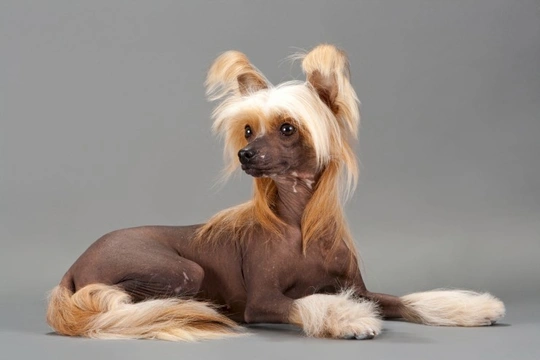
How to care for a hairless dog’s skin
Hairless dogs (such as the hairless variant of the Chinese crested) are obviously far less common than regular furry dogs, but they are still very popular in both the UK and further afield. This unusual trait is caused by a gene mutation which is why sometimes a litter may be born containing both bald and hairless pups, or pups that are not entirely hairless and have some small or fine patches of fur.
If you own a hairless dog or are considering buying one, it is important that you understand the implications that this lack of a fur coat can have on the dog, and that they require different care and management in terms of taking care of their skin than a dog that has fur. In this article we will look at some of the things you need to consider when it comes to caring for the skin of a hairless dog, in order to keep them safe, comfortable and happy. Read on to learn more.
Bathing
First of all, a hairless dog needs to be bathed at least once a fortnight and potentially once a week, which is something that all potential buyers should bear in mind! This is because they do not benefit from the protection that fur provides to the skin, and fur fulfils a lot of different roles as well as simply keeping the dog warm. A hairless dog’s skin is apt to become dry and dirty very quickly if they are not bathed regularly, and so bathing is required to keep the skin clean and healthy. Hairless dog breeds can and sometimes do suffer from problems such as blackheads and white heads on the body, and even potentially breakouts of acne, which can all be reduce or eliminated simply by good care of the skin, which includes regular bathing.
It is important to use a very mild, nourishing shampoo that will not strip or dry the skin, and that is not fragranced or coloured. An oatmeal shampoo, natural baby shampoo or something else very gentle is best.
Checking the skin over
When your bathe your dog, it is important to check their skin over (including the harder to reach areas such as under the belly and between the legs) for signs of spots, lumps and bumps, or even sores that can be caused by not taking care of your dog’s skin properly. Trying to pop spots or otherwise remove them is something that needs to be handled with care, as it can lead to scarring or irritation if the spot is not ready, or not handled correctly. If in doubt, leave alone or ask your vet or groomer for advice!
Gently exfoliating when bathing your dog can of course help to keep their skin clear and spot-free.
Moisturising
A dog without hair will not be able to maintain as much moisture where it counts as a dog with fur, and so you might need to actually use an emollient product to keep your dog’s skin moist and supple. A product designed for people with sensitive skin, or advised by your vet is the best choice.
It is also important to pick a product that is non-comodogenic and water based rather than oil based, to reduce the chances of spots and irritations!
Sun care
A dog with no fur is much more sensitive to problems such as sunburn, and so it is vitally important that you protect your dog’s skin from the elements, such as using sun screen or putting them in a t shirt. Keep them out of direct sun, and remember that your dog can even get sunburn if inside if they are lying right in front of a window.
Sunburn is unpleasant for everyone, and especially for a dog, and of course, the risk of melanomas and other types of skin cancers are increased if your dog gets sunburnt or is regularly out in the sun without protection.
In the cold
In cold weather too your dog will need protection from the elements in the form of coats and jumpers, and it is also important to bear in mind that cold weather and central heating can dry the skin out, which is uncomfortable and can cause other problems too.
Pay attention to your dog’s skin in the cold weather as well as warm weather, and ensure that they are not developing dry patches or problems. Try to keep the humidity levels in your home at a reasonable level, and if the family are getting dry skin or irritated eyes, the chances are that your dog will be affected too. Also, remember that the temperature overnight can often drop well below daytime levels, so don’t leave your dog in a cold room overnight without heat protection!



